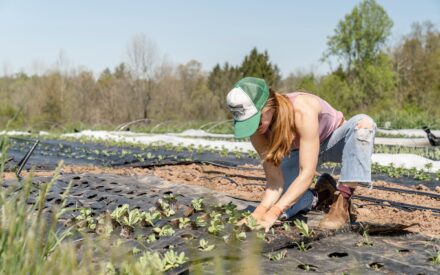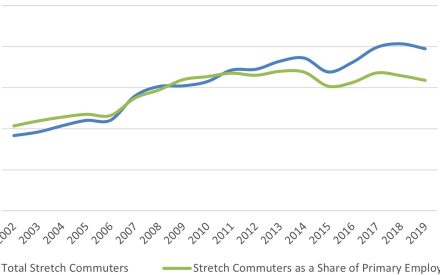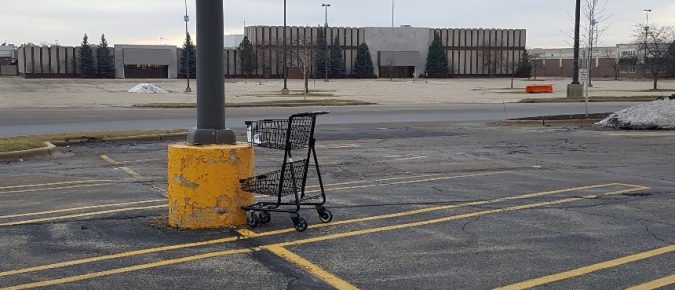Publications
Journal Articles
Internal Publications
Broadband and the Wisconsin Economy
EXECUTIVE SUMMARY January 2021 — In this study we explore issues related to broadband coverage and importance of coverage to community well-being. Several key conclusions include: Fact Sheets Broadband Access and Affordability How Available is Broadband in Wisconsin? Disconnected: Households Without Any Internet Broadband Connectivity and Health Outcomes Increasing Broadband Adoption Broadband and […]
Latinx Immigration, Entrepreneurship, and Downtown Development (Issue 193, January 2021)
January 2021 — Small towns and rural communities across Wisconsin have markedly different experiences when it comes to their downtowns and main streets. Over the last decade, some Wisconsin communities have seen their downtown district become a lifeline to a rural renewal, while others have experienced decline defined by an exodus of businesses and disinvestment […]
WIndicators Volume 3, Number 5: Are the Kids Alright? Women, Work, & Childcare
Childcare was a challenge for parents before the pandemic and has only become more difficult in recent months. During the pandemic, as much as 60% of childcare providers closed and stopped providing childcare (Bipartisan Policy Center, 2020). While many of those closures were temporary, a recent state-level study estimates that, in absence of additional aid, 30% of the childcare supply in Wisconsin could be permanently lost if providers are closed for more than two weeks without revenue due to COVID-19.
How Artists and a Public Space Can Create Unique and Safe Seating for Restaurant Carryout (Issue 192, October 2020)
An Innovative Response to COVID-19 October 2020 — If we have gained anything from the pandemic, one of the most important and hopefully long-lasting is the successful collaboration of public and private sectors. Place makers, community organizers, and city officials have all had to become more creative and think further outside the box than we […]
Alternative Revenues for Downtown Restaurants during COVID-19 (Issue 191, September 2020)
Restaurants have become a key element in the business mix of downtowns throughout Wisconsin and the U.S. Their growth has helped reestablish downtown as the central social district of our communities and they have been a major employer and a visible example of entrepreneurship at work.
WIndicators Volume 3, Number 4: Impact of COVID-19 on the Wisconsin Economy
The COVID-19 pandemic has significantly impacted Wisconsin’s economy. When the country reported the first case on January 20th, 2020, there was uncertainty as to how fast and far the virus would spread. On March 11th, the World Health Organization declared a pandemic and on March 16th all Wisconsin public schools were ordered to close while Governor Tony Evers instituted a Safer-at-Home order and closure of all non-essential businesses.
WIndicators Volume 3, Number 3: COVID-19 Vulnerable Business Owners by Race & Ethnicity
Recent analysis demonstrates that communities of color are disproportionately suffering the health impacts of COVID-19. In Milwaukee County, 29 percent of the population is Black or African American yet Black or African Americans represent 43 percent of COVID-19-related deaths1. Much like the poor health outcomes from COVID-19 are disproportionately suffered by people of color, the economic costs are likely also inequitably distributed across racial and ethnic groups.
A Trade Analysis of Wisconsin Retail and Service Markets: Updated for 2019
EXECUTIVE SUMMARY May 2020 — Using 2019 county sales tax data, we examine the strength and weaknesses of Wisconsin retail and service markets through the application of the tools of Trade Area Analysis. Only those counties that have elected to collect the optional county sales tax are included in the analysis. Because sales tax data […]
WIndicators Volume 3, Number 2: Broadband in Economic Development
The Safer-At-Home order by Governor Evers put into effect starting March 25, 2020 in response to COVID-19 has drawn attention to the lack of adequate broadband in many parts of Wisconsin. As many employees work from home, students take their courses online, patients seek care through telehealth, and families entertain themselves at home with streaming services, access to broadband has become all the more apparent and the impacts more significant. Without access to adequate broadband service, employees find it difficult to work.
The Changing Facades of Downtown: A La Crosse, Wisconsin Success Story (Issue 190, April 2020)
(Image Source: Jakob Braun / Unsplash) April 2020 — In May 2016 when Travis Gaarder purchased the downtown property at 111 4th Street North, he began his plan for improvements. The two-story building was only assessed at $45,300 and both floors were vacant. The last known tenant on the first floor was in the 1980s […]
WIndicators Volume 3, Number 1: Student Loan Debt: A Challenge for Wisconsin?
The growth in student debt in the United States has become a cause for concern. At the beginning of 2006, student debt, or loans taken out to pursue higher educational opportunities, was approximately $481 billion. By the beginning of 2019, that amount has grown to nearly $1.6 trillion (Figure 1a). While student loan debt remains smaller than consumer credit debt ($4.1 trillion) or mortgage debt ($15.5 trillion), the rate of growth of student debt is alarming.
Current Trends in Retail: Looking Ahead to 2020 and Beyond (Issue 189, December 2019)
The US is significantly oversupplied with retail space. We have as much as 10-times the square feet per person as Germany. This has contributed to as many as 10,000 store closures this year. Smaller community malls have been hurt the most. Those that remain open typically operate at a vacancy rate of 10% or more. […]






















